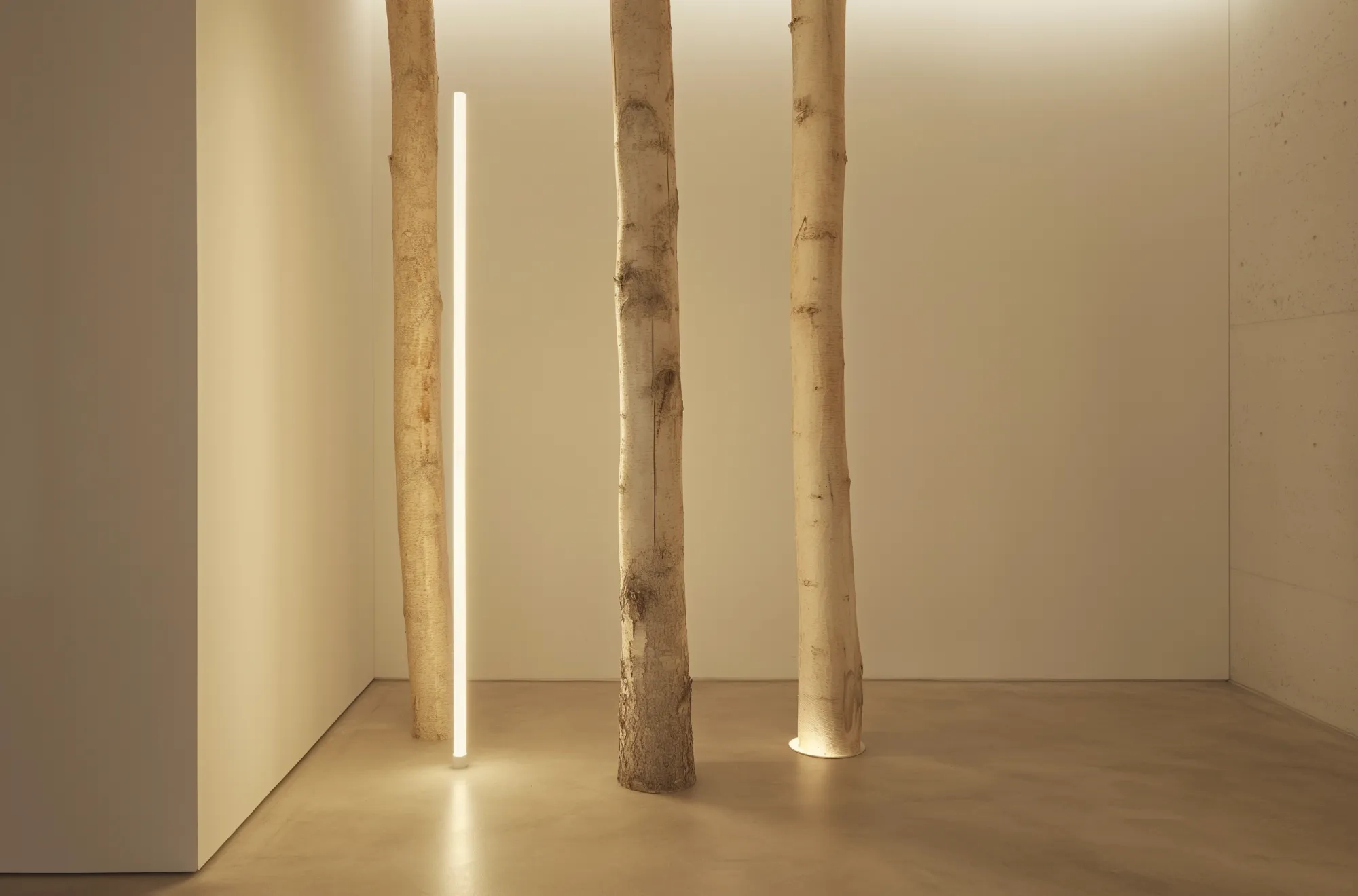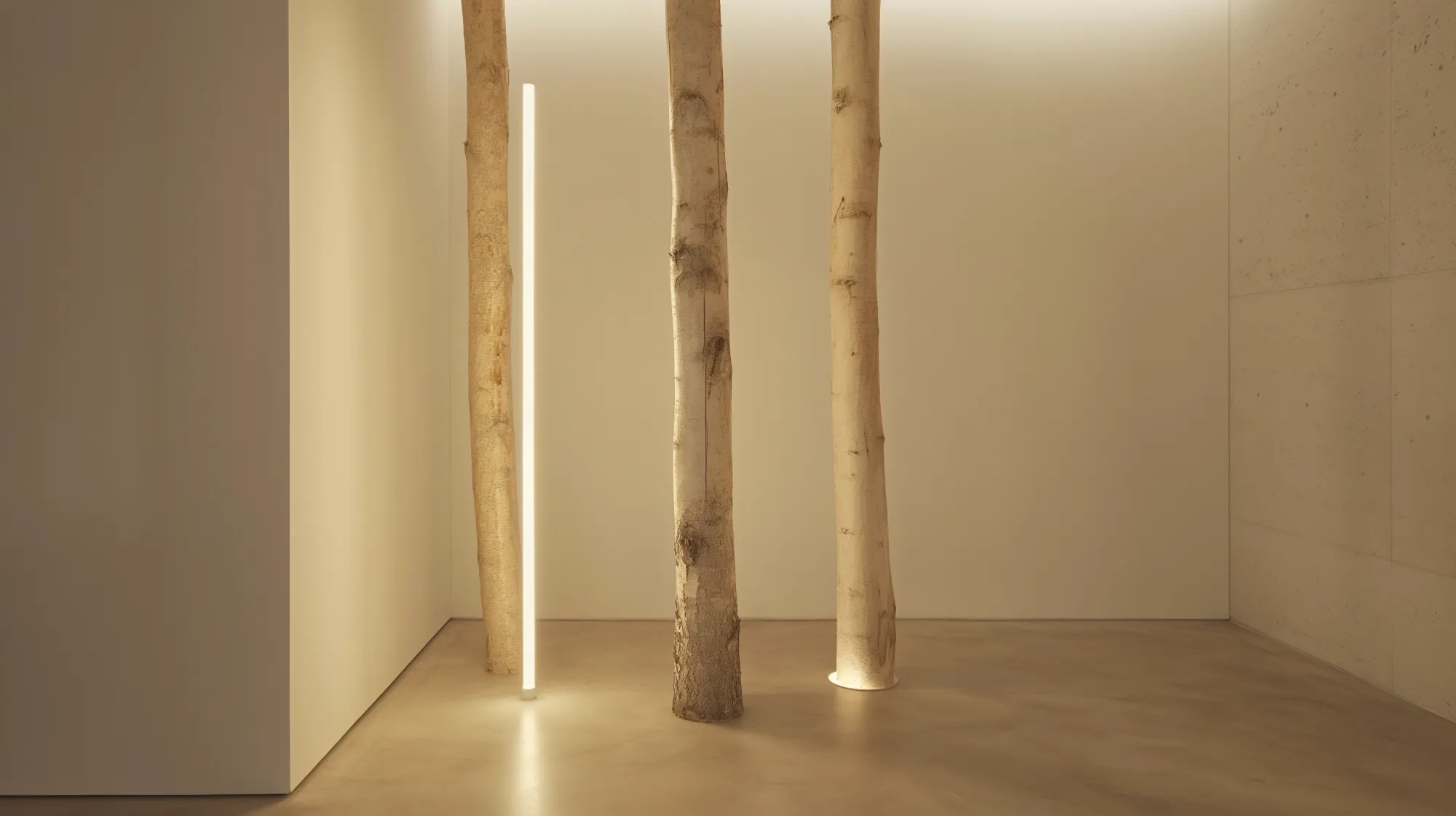A Lamp, Rousseau, and the Ermenonville Garden

Date
April 2024
Type
Projects
Rousseau found his final resting place on a modest islet of birch trees in Hermanoville, a location that has been a point of reflection for many posthumous thinkers. In keeping with this symbolism, our lamp employs vertical birch trunks, arranged at varying heights to evoke the serene irregularity of the natural landscape of the Ermenonville garden. At the center of this installation, among the birch trunks, an illuminated profile acts as the core and source of light, symbolizing the clarity of thought that Rousseau championed. The design, approximately two meters tall at its highest point and one and a half meters wide, serves as a visual metaphor of Rousseau’s legacy.

ABOUT ERMENONVILLE GARDEN
The garden of Ermenonville, located in the Oise department in France, is now a sanctuary that captures the essence of eighteenth-century landscape thought. Created in 1765 by René de Girardin, Marquis of Vauvray, this landscaped garden is a tribute to the English style and serves as a physical manifestation of the philosophical ideas of Jean-Jacques Rousseau.
Deeply inspired by Rousseau’s theories on nature and society, which Girardin found in works like Julie, ou la nouvelle Héloïse, the park’s design reflects a romantic and non-geometric view of nature. This approach results in a landscape where the picturesque and the useful intertwine, creating views that offer both aesthetic beauty and reflective spaces. There are no meticulously trimmed hedges or rigid alignments here, but rather paths that invite spontaneous exploration and surprising discoveries of architectural elements such as the Naiades grotto or the philosophy temple.
The park is also notable for its "philosopher's cabin," a structure within the section known as 'Le Désert,' where Rousseau immersed himself in long hours of contemplation. Although today his original tomb on the isle of poplars is a cenotaph—after his remains were transferred to the Pantheon in Paris in 1794—the place continues to evoke a deep sense of connection with his ideas.

J. Moreth - View of the tomb of the Swiss philosopher Jean Jacques Rousseau (1712-1778)